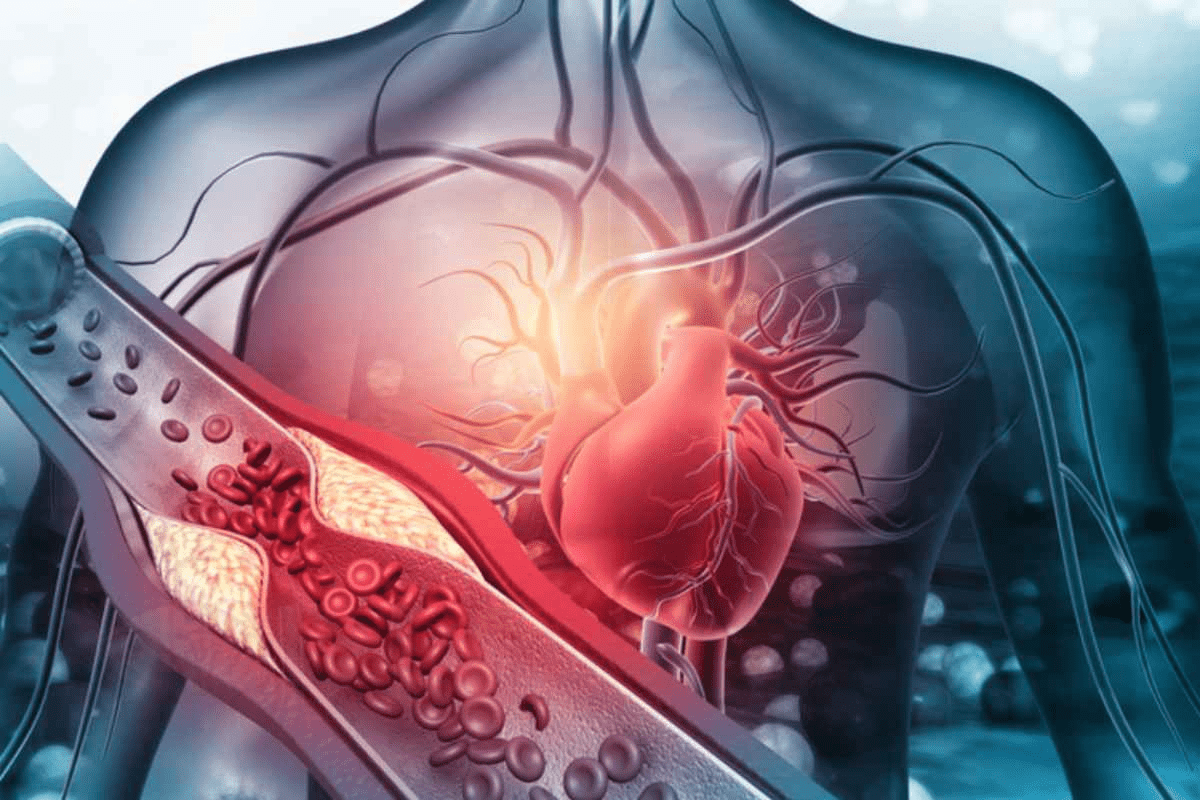Last Updated on November 26, 2025 by Bilal Hasdemir

Prostate cancer affects thousands of men worldwide. It’s important to understand how it progresses. Knowing when the disease is getting worse is key for managing it effectively. Know the advanced prostate cancer symptoms that indicate progression and how to respond with medical treatment.
Identifying worsening prostate cancer symptoms early can significantly impact treatment outcomes. As the disease gets worse, symptoms can escalate, affecting a patient’s quality of life.
It’s vital to recognize the signs that prostate cancer is spreading. These signs include physical and clinical changes. Knowing these signs allows for timely medical action.
Key Takeaways
- Understanding the progression of prostate cancer is key for effective management.
- Early identification of worsening symptoms can greatly improve treatment outcomes.
- Recognizing signs of prostate cancer spreading is vital for timely medical intervention.
- Advanced prostate cancer symptoms can significantly affect a patient’s quality of life.
- Being aware of the indicators of prostate cancer progression allows for prompt action.
Understanding Prostate Cancer Progression
It’s key to know how prostate cancer gets worse. This disease goes through many stages. It starts in the prostate gland and can spread to other parts of the body.
The Stages of Prostate Cancer Development
Doctors divide prostate cancer into stages. These stages help figure out the cancer’s spread and the best treatment. Knowing these stages is vital for managing the disease.
- Localized prostate cancer: Cancer stays within the prostate gland.
- Locally advanced prostate cancer: Cancer grows outside the prostate but hasn’t spread far.
- Metastatic prostate cancer: Cancer has spread to distant parts of the body, like bones or lymph nodes.
The American Cancer Society explains these stages well. They stress the need to understand the cancer’s progression for effective management.
How Prostate Cancer Typically Advances
Prostate cancer can grow in different ways. It depends on how aggressive the cancer is and the person’s health. It usually starts in the prostate gland and can spread to nearby tissues.
- Cancer cells can invade nearby tissues or organs.
- Cancer can spread to lymph nodes, which are part of the body’s lymphatic system.
- In advanced cases, prostate cancer can metastasize to bones, liver, lungs, or other organs.
Knowing how prostate cancer progresses is critical. It helps in monitoring the disease and adjusting treatments as needed.
Advanced Prostate Cancer Symptoms: An Overview

It’s important for patients and doctors to know about advanced prostate cancer symptoms. As the cancer grows, it can cause different problems. These issues can affect how well you live and the treatments you can get.
Differentiating Early vs. Advanced Symptoms
It’s key to tell early and advanced symptoms apart. Early symptoms might not be obvious or could seem like other health issues. But, advanced symptoms are more serious. They can include trouble with urination, pain, and feeling tired or losing weight.
| Symptom Category | Early Stage Symptoms | Advanced Stage Symptoms |
| Urinary Symptoms | Frequent urination, weak urine flow | Urinary retention, incontinence |
| Pain | Minimal or localized to the prostate area | Radiating to bones, pelvis, or lower back |
| Systemic Symptoms | Generally absent | Weight loss, fatigue, loss of appetite |
Why Symptom Recognition Matters
Spotting symptoms of advanced prostate cancer is important. It helps doctors make better plans for treatment. Catching it early can make life better and might even save lives. It’s critical for patients to talk openly with their doctors about any symptoms.
Key aspects of symptom recognition include:
- Understanding the progression of prostate cancer
- Identifying new or worsening symptoms
- Communicating effectively with healthcare providers
Urinary Changes as Warning Signs

Urinary changes are a key sign of prostate cancer getting worse. As the disease progresses, patients may face various urinary symptoms. These symptoms can greatly impact their daily life.
Difficulty Urinating in Advanced Prostate Cancer
Urinary retention, or trouble urinating, is common in advanced prostate cancer. This happens when the tumor blocks the urethra, making it hard to pass urine. Urinary retention prostate cancer worsening is a serious issue that needs quick medical help.
Symptoms of trouble urinating include:
- Weak or interrupted urine flow
- Straining to urinate
- Frequent urination
- Feeling like the bladder is not fully emptied
Blood in Urine and Incontinence Issues
Advanced prostate cancer can also cause blood in urine and incontinence. Blood in the urine, or hematuria, can mean the tumor has invaded the urinary tract. Incontinence happens when the urinary sphincter or nerves controlling the bladder get damaged.
| Symptom | Description | Possible Cause |
| Blood in Urine | Presence of blood in the urine | Tumor invasion into the urinary tract |
| Urinary Incontinence | Inability to control urination | Damage to urinary sphincter or nerves |
| Difficulty Urinating | Straining or weak urine flow | Urethral obstruction by tumor |
It’s important to know about these urinary changes to manage advanced prostate cancer well. If you’re experiencing these symptoms, see your healthcare provider for the right care and treatment.
Pain Signals That Indicate Cancer Spread
It’s important to know about pain patterns to spot prostate cancer spreading. As prostate cancer grows, it can move to other parts of the body. This leads to different kinds of pain.
Bone Pain as a Key Indicator
Bone pain is a common sign when prostate cancer reaches the bones. This pain can feel like a dull ache or a sharp stab. It often happens in the back, hips, or ribs.
Bone Pain Characteristics:
- Dull ache or sharp pain
- Often located in the back, hips, or ribs
- Can worsen with movement or at night
Pelvic, Hip, and Back Pain Patterns
Pain in the pelvic area, hips, and back can also show prostate cancer spreading. This pain comes from cancer cells in these bones. The pain can be constant or get worse with certain activities.
| Pain Location | Possible Cause | Characteristics |
| Back Pain | Cancer spread to spine | Dull ache, sharp pain with movement |
| Hip Pain | Cancer spread to hip bones | Pain when walking or moving hip |
| Pelvic Pain | Cancer spread to pelvic bones | Discomfort or pain in the pelvic area |
Spotting these pain patterns is key for both patients and doctors. It helps them understand how prostate cancer is progressing. This information guides the right treatment plan.
Systemic Symptoms of Worsening Prostate Cancer
Systemic symptoms like weight loss and fatigue often show prostate cancer is getting worse. These signs can really hurt a patient’s quality of life and health.
Unexplained Weight Loss and Appetite Changes
Unexplained weight loss is a big worry for those with prostate cancer getting worse. It can happen for many reasons, like changes in appetite or how the body reacts to cancer. Appetite changes can make it hard to eat well.
If you’re losing weight or your appetite is off, see your doctor. They can help with nutrition advice and support. This ensures you get the nutrients you need to stay healthy.
Increasing Fatigue and Weakness
Fatigue and weakness are common signs of advanced prostate cancer. They can come from the cancer itself or treatments like chemotherapy. Feeling tired can make it hard to do everyday things, affecting your life quality.
Dealing with fatigue needs a few steps, like changing your lifestyle and possibly getting medical help. Talk to your doctor about your fatigue. They can help you find ways to manage it.
Signs Prostate Cancer is Spreading to Bones

Prostate cancer can spread to the bones, causing pain and health problems. It’s important to know the signs of bone metastasis.
Common Sites of Bone Metastasis
Prostate cancer often goes to certain bones. The most common places are:
- The pelvis
- The spine
- The ribs
- The femur (thigh bone)
These bones have a lot of marrow, making them more likely to get cancer. When cancer reaches these areas, it can cause bone pain. This is often the first sign.
Fracture Risks and Bone Complications
Bone metastasis can make bones weak, raising the chance of fractures. These fractures can happen without a big injury, known as pathological fractures. Other problems include:
- Hypercalcemia (high calcium in the blood)
- Spinal cord compression
- Bone instability
Spotting these signs is key to managing the disease. It helps improve life quality for patients. Regular checks and the right treatment can lessen these issues.
It’s essential for patients and doctors to know the signs of bone metastasis. Early action can greatly help manage bone metastasis and its complications.
Lymphatic System Involvement
The lymphatic system is key in how prostate cancer spreads. It’s a focus of study. When prostate cancer grows, it often goes to the lymph nodes. This can cause noticeable symptoms.
Swollen Lymph Nodes as Warning Signs
Swollen lymph nodes are a big sign of prostate cancer spread. Cancer cells in the lymphatic system make lymph nodes swell. This swelling can happen in the neck, armpits, or groin.
Swollen lymph nodes mean the cancer is moving and growing. It’s spreading beyond the prostate.
How Cancer Travels Through the Lymphatic System
The lymphatic system fights off infections and diseases. But, it can help prostate cancer spread. Cancer cells can get into lymphatic vessels and go to lymph nodes.
There, they can start to grow, making more cancer. Knowing how this happens helps doctors find better treatments.
As cancer cells move, they can cause pain, swelling, and discomfort. Spotting these signs early is important. It helps manage the disease and improves patient care.
Neurological Symptoms of Metastatic Prostate Cancer
When prostate cancer spreads, it can cause many neurological symptoms. This happens when cancer reaches the spine or other parts of the nervous system. It’s important to recognize these symptoms early.
Spinal Cord Compression Signs
Spinal cord compression is a serious issue with metastatic prostate cancer. Symptoms include:
- Severe back pain
- Numbness or tingling sensations in the legs
- Weakness in the legs
- Loss of bladder or bowel control
If you experience these symptoms, seek medical help right away. Quick treatment can prevent lasting damage.
Other Neurological Manifestations
Metastatic prostate cancer can also cause other neurological symptoms. These include:
| Symptom | Description |
| Headaches | Due to brain metastases or other causes |
| Seizures | In rare cases, when the brain is involved |
| Cognitive Changes | Memory issues or confusion |
Early detection and treatment of these symptoms can greatly improve patient outcomes.
It’s vital for both patients and healthcare providers to understand the neurological symptoms of metastatic prostate cancer. This knowledge helps in managing complications effectively. It improves the quality of life for those affected.
Late Stage Prostate Cancer Warning Signs in Other Organs
Late-stage prostate cancer often spreads to organs like the liver and lungs. This causes specific symptoms. Knowing these signs is key to managing the disease in its advanced stages.
Liver Metastasis Symptoms
When prostate cancer reaches the liver, it can cause several issues. Some common symptoms include:
- Jaundice, which makes the skin and eyes turn yellow
- Abdominal pain or discomfort, mainly in the upper right area
- Unexplained weight loss and loss of appetite
- Fatigue and a general feeling of being unwell
In some cases, liver metastasis can cause liver failure. It’s important to monitor liver function with regular blood tests for early detection.
Lung Involvement Indicators
Prostate cancer spreading to the lungs can cause various respiratory symptoms. Key indicators include:
- Shortness of breath or difficulty breathing
- Persistent coughing, which may be accompanied by coughing up blood
- Chest pain that worsens with deep breathing or coughing
- Recurring respiratory infections, such as pneumonia
It’s vital for patients with late-stage prostate cancer to be aware of these symptoms. They should report them to their healthcare provider promptly.
Changes in PSA Levels and What They Mean
PSA levels changing is key to knowing if prostate cancer is getting worse or coming back. Prostate-Specific Antigen (PSA) is a protein made by the prostate gland. Its levels in the blood can show if there’s prostate cancer, or other issues.
PSA Velocity and Doubling Time
PSA velocity is how fast PSA levels change over time. PSA doubling time is how quickly PSA levels double. Both are important for figuring out how aggressive prostate cancer is.
- PSA Velocity: A quick rise in PSA levels might mean the cancer is aggressive.
- PSA Doubling Time: Faster doubling times suggest more aggressive disease.
Rising PSA After Treatment
A rise in PSA levels after treatment could mean the cancer is back. It’s important to understand what a rising PSA means for those who’ve had treatment.
- Keep an eye on PSA levels to spot any changes.
- Talk to your healthcare provider about what a rising PSA means.
- Consider extra treatments or steps as advised.
Changes in PSA levels are a big clue about prostate cancer. Keeping an eye on these changes helps both patients and doctors make the best treatment plans.
Prostate Cancer Recurrence Warning Signs
Spotting prostate cancer recurrence early is key to better treatment results. This can happen through biochemical or clinical means. Knowing these signs is vital for managing the disease well.
Biochemical Recurrence vs. Clinical Recurrence
Biochemical recurrence shows up as rising Prostate-Specific Antigen (PSA) levels after treatment. Clinical recurrence means symptoms or cancer found on scans. Both need quick doctor visits.
Biochemical recurrence is caught through PSA tests, leading to early action. Clinical recurrence shows up as new symptoms or changes in old ones. This calls for a detailed check-up.
Timeframes and Risk Factors for Recurrence
How soon prostate cancer comes back varies by person. It depends on the cancer’s stage, treatment, and overall health. Risk factors include high Gleason scores, positive margins, and advanced cancer at first diagnosis.
Knowing these risks and keeping an eye on PSA levels helps catch recurrence early. Those with prostate cancer history should talk about their risk with their doctor.
Regular check-ups and PSA tests are vital for watching for recurrence. By knowing the signs and risks, patients can team up with their doctors to manage the disease well.
End Stage Prostate Cancer Symptoms
The final stages of prostate cancer lead to severe symptoms that greatly affect a patient’s life. As the disease worsens, patients face many physical changes and discomforts.
Physical Changes in Terminal Stages
In the end stages of prostate cancer, patients undergo significant physical changes. They often feel severe pain in bones, pelvis, and back due to cancer spreading. Changes in how they urinate and have bowel movements, like incontinence or constipation, are also common.
Patients may also feel fatigue and weakness, making simple tasks hard. Weight loss is another symptom, often because of less appetite or trouble keeping weight.
Managing End-Stage Symptoms
It’s vital to manage symptoms in the end stages of prostate cancer to keep patients comfortable. Pain management is key, using a mix of medicines and other treatments.
A leading oncologist says, “Effective symptom management needs a full approach. This includes medical treatment, supportive care, and emotional support for patients and their families.” This approach can greatly improve life quality for those with end-stage prostate cancer.
“The goal of care in the terminal stages is to ensure that patients are as comfortable as possible, allowing them to maintain dignity and spend meaningful time with loved ones.”
Supportive care, like counseling and palliative care, is essential for emotional and psychological needs. By focusing on both physical comfort and emotional well-being, healthcare providers offer full care to those with end-stage prostate cancer.
When to Seek Immediate Medical Attention
It’s vital to know the emergency signs of prostate cancer getting worse. Some symptoms mean the disease is getting serious and needs quick medical help.
Emergency Warning Signs
People with prostate cancer should watch out for these warning signs:
- Severe pain that’s not helped by current meds
- Hard time peeing or can’t pee at all
- Feeling numb, weak, or paralyzed
- Big changes in how you pee or poop
- Unexplained fever or chills
These signs mean the cancer might have spread or is causing serious problems. You need to see a doctor right away.
| Symptom | Description | Action Required |
| Severe Pain | Pain not controlled by current meds | Seek immediate medical attention |
| Urinary Difficulty | Can’t pee or it’s very hard | Contact healthcare provider urgently |
| Neurological Symptoms | Numbness, weakness, or paralysis | Emergency medical care required |
Communicating Effectively with Healthcare Providers
Talking well with doctors is key to managing prostate cancer. Be ready to share your symptoms in detail. Tell when they started and any changes you’ve noticed.
Tips for Effective Communication:
- Keep a symptom journal to track changes and patterns
- List all medications and supplements being taken
- Ask questions about treatment options and possible side effects
- Bring a friend or family member to appointments for support
Conclusion: Monitoring Prostate Cancer Progression
Managing prostate cancer well means keeping a close eye on how it grows. It’s important for both patients and doctors to spot signs that the cancer is getting worse. This way, they can work together to handle the disease.
Signs of advanced prostate cancer can show up in different ways. These include changes in how you pee, pain, and other general symptoms. Knowing these signs helps doctors and patients make the right moves to improve treatment plans.
Watching how prostate cancer grows means regular doctor visits, checking PSA levels, and paying attention to any health changes. By staying informed and active, people can deal with the challenges of managing prostate cancer better.
FAQ
What are the common signs that indicate prostate cancer is getting worse?
Signs include trouble urinating and blood in urine. You might also experience incontinence. Pain in the bones, pelvis, hips, and back is common. Other symptoms are unexplained weight loss, changes in appetite, and feeling very tired.
How does prostate cancer typically progress?
It starts in the prostate and can spread. This can happen in several stages. Eventually, it might reach bones, lymph nodes, and other organs like the liver and lungs.
What are the symptoms of advanced prostate cancer?
Symptoms include urinary changes and pain in different parts of the body. You might also feel very tired and lose weight without trying. If it spreads to the spine, you could have neurological symptoms.
What does bone pain indicate in prostate cancer?
Bone pain means the cancer has spread to the bones. This can cause fractures and needs quick medical help.
How does prostate cancer affect the lymphatic system?
It can spread through the lymphatic system. This leads to swollen lymph nodes, showing the cancer is getting worse.
What are the warning signs of prostate cancer recurrence?
Warning signs include a rising PSA level after treatment. This means biochemical recurrence. Clinical recurrence happens when symptoms return or new ones appear.
What are the symptoms of end-stage prostate cancer?
Symptoms include severe pain and problems with urination or bowel movements. You might also lose a lot of weight and feel very tired. These need careful management for comfort.
When should I seek immediate medical attention for prostate cancer?
Seek immediate help for emergency signs like severe pain, trouble urinating, or other symptoms that badly affect your life.
How is PSA velocity related to prostate cancer progression?
PSA velocity shows how fast the cancer is growing. A quick increase means the disease is aggressive.
What are the signs of neurological symptoms in metastatic prostate cancer?
Neurological symptoms include numbness, weakness, or paralysis from spinal cord compression. Symptoms vary based on where the cancer spreads.
Can prostate cancer spread to other organs, and what are the symptoms?
Yes, it can spread to organs like the liver and lungs. Symptoms include liver dysfunction or respiratory issues.
References
- Cancer Research UK. (2025, September 2). Symptoms of metastatic prostate cancer. https://www.cancerresearchuk.org/about-cancer/prostate-cancer/metastatic-cancer/symptoms
- NHS. (2025, August 7). Symptoms of prostate cancer. https://www.nhs.uk/conditions/prostate-cancer/symptoms/






